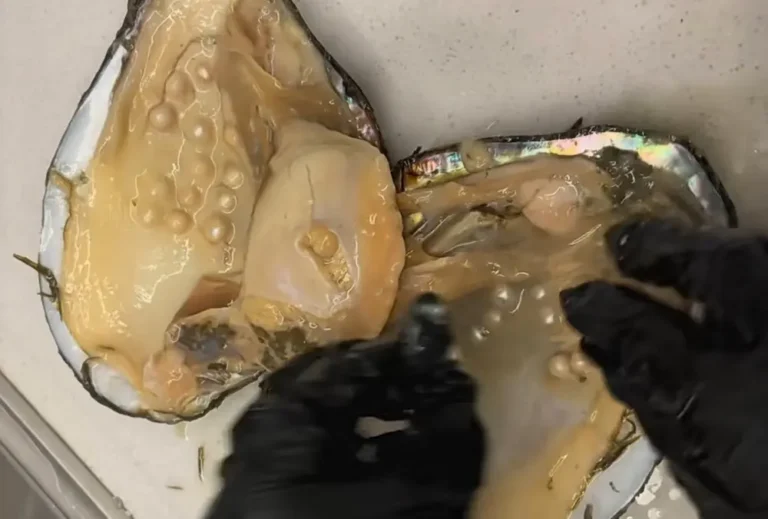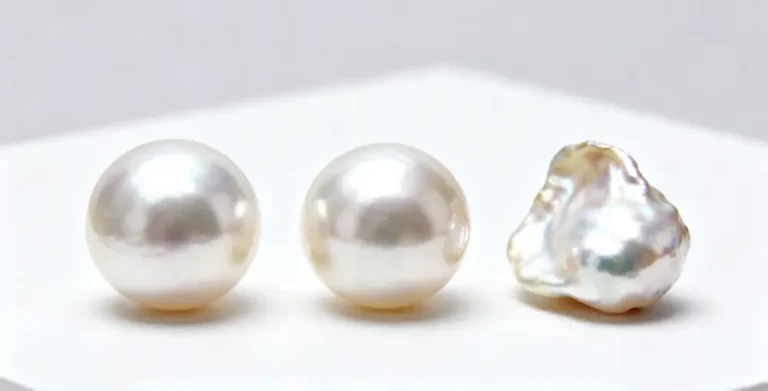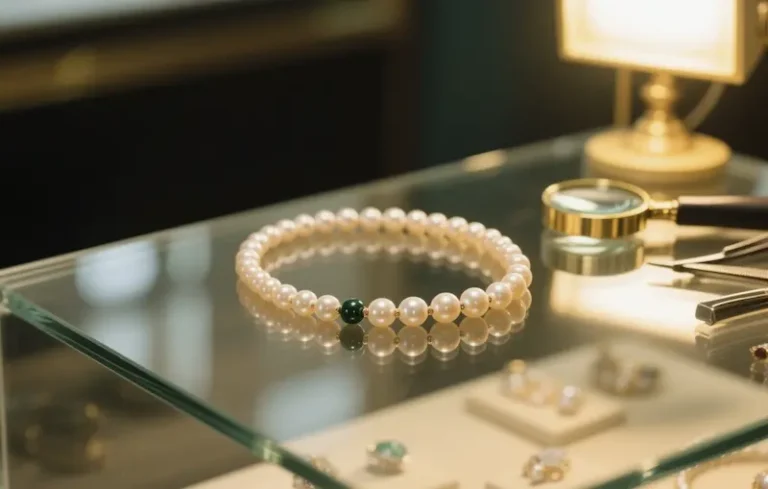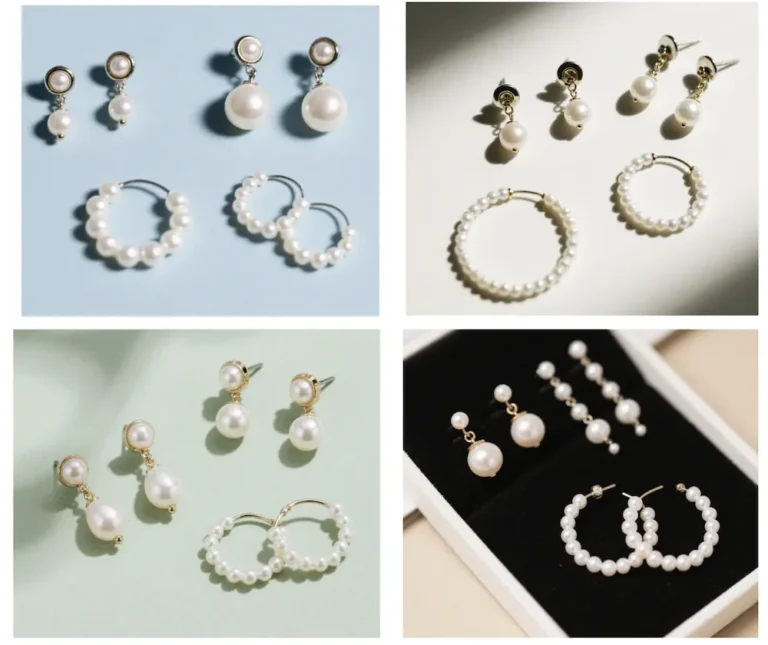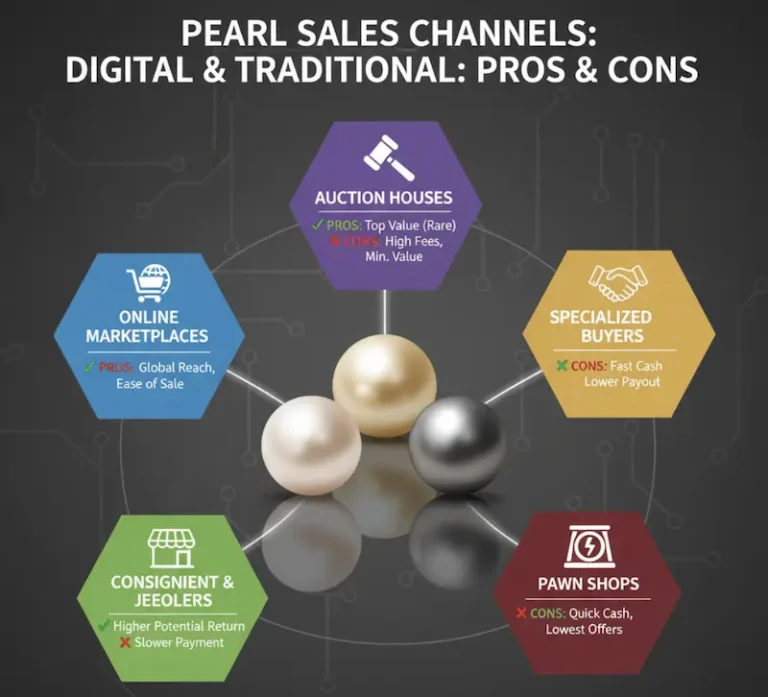People have liked pearls for a long time. People still ask the same questions and have the same worries about wearing pearls when they go to the store. As a store owner, you’re not just selling jewelry. You’re also helping customers feel comfortable, sharing your expertise, and helping them find exactly what they’re looking for.
This guide covers the most frequent questions customers have about wearing pearls, helping you become someone they trust for advice. Whether they’re buying pearls for the first time or are experienced collectors, your customers deserve answers that combine helpful information with genuine concern for their needs—making this a comprehensive guide what to share.
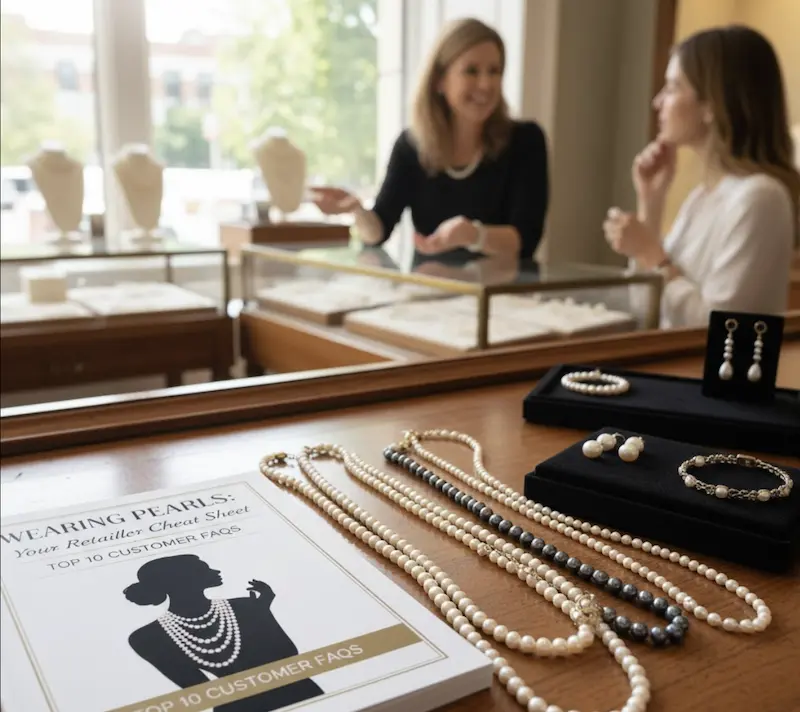
Understanding the Basics: Why Pearl Care Matters
Pearls aren’t like your average gemstones. They come from living creatures, and that gives them a natural beauty that deserves a bit of understanding and care. When customers realize this, they’ll better understand why there are some specific guidelines for wearing pearls.
That beautiful, shiny coating on pearls, called nacre, is actually quite delicate. On the Mohs hardness scale, it only measures between 2.5 and 4.5, making it softer than most gemstones. Because pearls are organic, they can react to things like acids, chemicals, and even the natural oils from your skin. This isn’t a defect; it’s just part of what makes them unique.
As a Pearl Manufacturer representative or retailer, you bridge the gap between pearl beauty and practical care. Your expertise transforms anxious buyers into confident pearl enthusiasts.
Top 10 Customer FAQs About Wearing Pearls
1. Is it okay to wear pearls every day?
Absolutely! Daily wearing pearls actually benefits them. Interestingly, the oils from your skin actually help keep pearls looking their best! Many experts suggest wearing them regularly instead of storing them away.
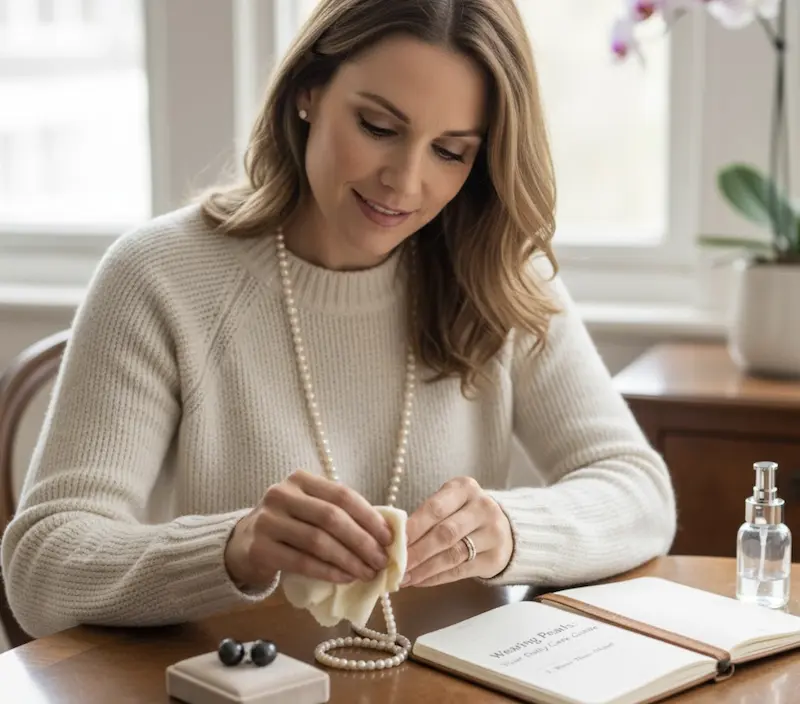
Because you’re wearing your pearls often, remember to take care of them, like you would with a pair of leather shoes. Just wipe them gently with a soft, slightly damp cloth after each wear to remove any makeup, perfume, or body oils.
For retailers selling wholesale pearls, teaching customers about this balance is crucial for turning them into loyal, returning customers. They’ll be back! Once they see how beautiful and shiny their pearls stay with a little daily care, that is.
2. What are the rules for wearing pearls?
The golden rule? “Last on, first off.” This simple phrase encapsulates the most important guideline for wearing pearls.
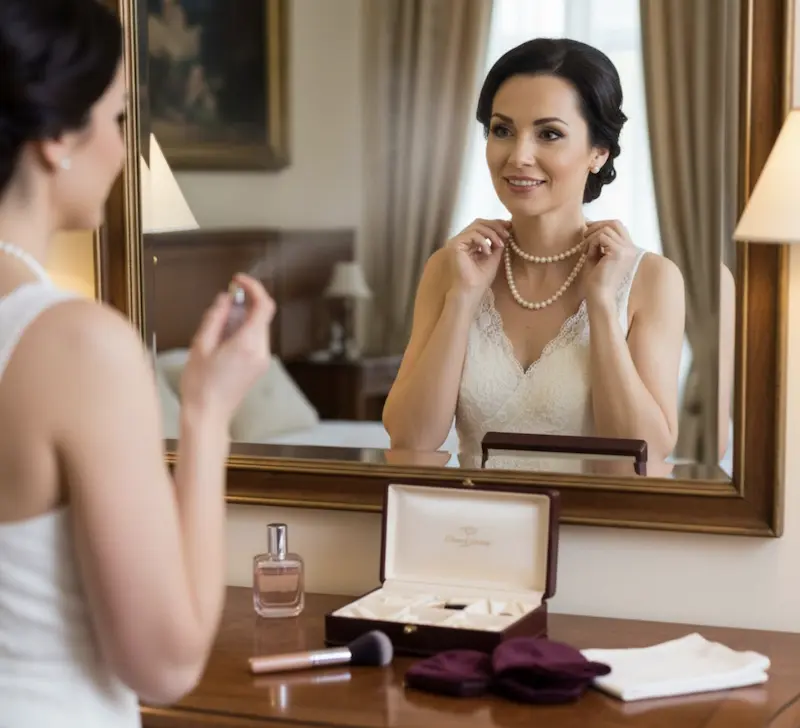
Here’s what that means practically:
Before wearing:
- Apply all makeup, hairspray, perfume, and lotions first
- Let these products dry completely (2-3 minutes minimum)
- Put on your pearls as your final accessory
After wearing:
- Remove your pearls first when undressing
- Wipe them gently with a soft cloth
- Store them away from other jewelry that might scratch them
This rule isn’t arbitrary fussiness. According to Mikimoto’s pearl care guidelines, chemicals in cosmetics and perfumes can damage the nacre over time, dulling that signature pearl glow.
Additionally, store pearls separately from harder gemstones. A single scratch from a diamond can permanently mar a pearl’s surface. Use a soft pouch or lined jewelry box compartment designated specifically for your pearl pieces.
3. Can pearls be worn 24/7?
Short answer: No. While wearing pearls frequently is encouraged, keeping them on around the clock causes unnecessary wear and prevents proper care.
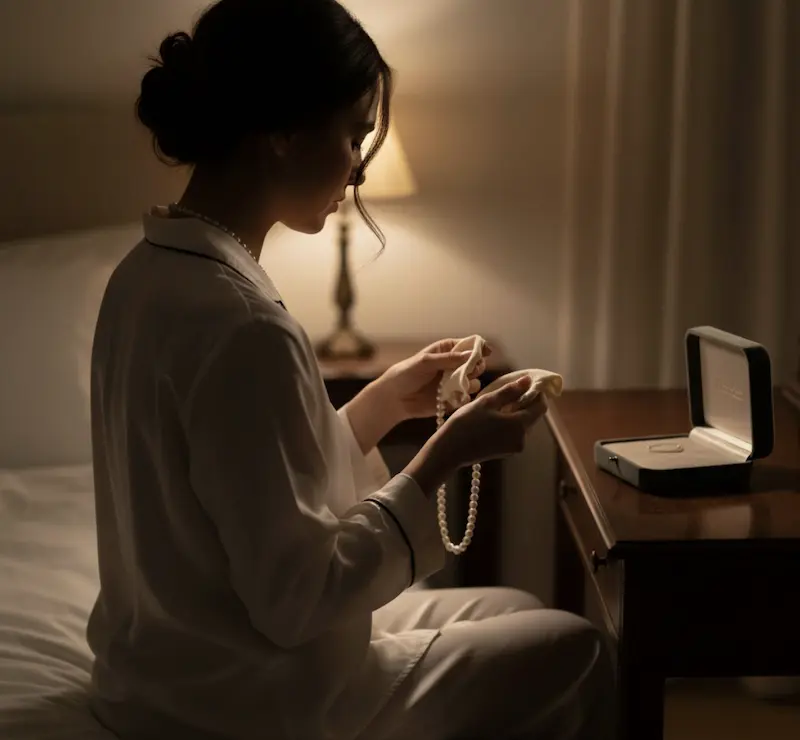
Sleep presents several risks. Body movements during sleep can cause necklace strands to catch and break. Sweat accumulates more during sleep, exposing pearls to prolonged moisture and body acids. The friction between pearls and bedding can gradually wear down the nacre.
Think of it this way—even the most comfortable shoes come off at night. Your pearls deserve the same consideration. That nightly break gives you the perfect opportunity to wipe them clean and let them rest properly.
Some customers worry that removing pearls daily is inconvenient. Show them how quick it becomes: unclasp, wipe, store. Thirty seconds of care preserves years of beauty.
4. Can you shower with pearls on?
You shouldn’t wear your pearls in the shower, bath, or pool. Water damage doesn’t happen right away or in a way that’s easy to see. It happens slowly over time when wearing pearls.
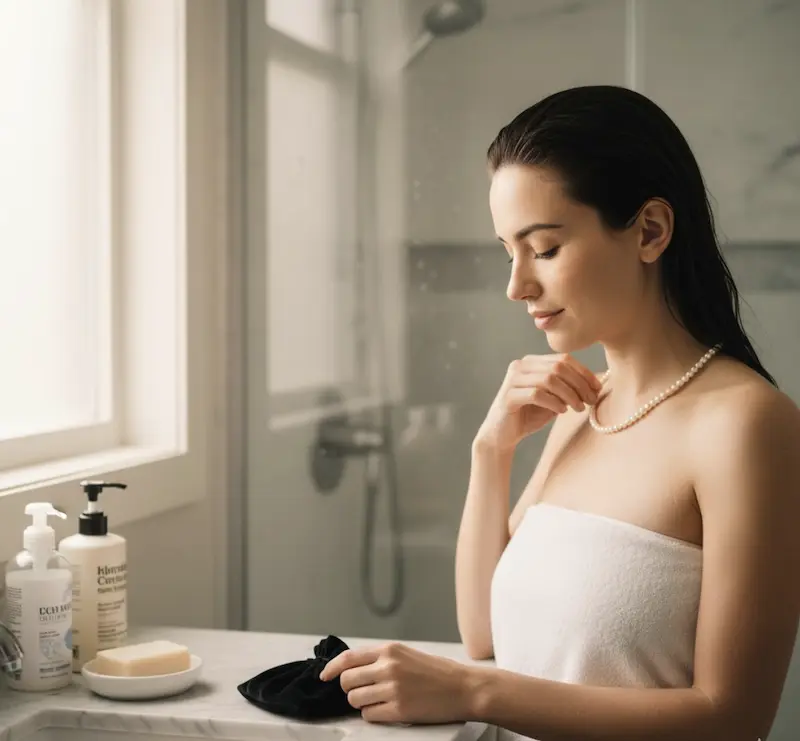
Here’s why water spells trouble:
- Soap and shampoo have chemicals that slowly eat away at the nacre of the pearl. Even those “gentle” products made for sensitive skin have stuff in them that’s too harsh for these organic gems.
- Chlorine in pools and hot tubs actively attacks pearl surfaces. A single swim won’t destroy your pearls, but repeated exposure causes irreversible dulling.
- String deterioration becomes a serious concern. Traditional pearl strands use silk thread, which weakens dramatically when wet. The GIA (Gemological Institute of America) recommends restringing pearls every 1-2 years with regular wear, but that timeline shrinks dramatically with water exposure.
- Humidity and moisture can also penetrate between the pearl and its nacre layers in baroque pearls or those with existing surface imperfections.
When customers browse your freshwater pearls collection, emphasize this water-sensitivity upfront. It prevents disappointment and builds trust.
5. Who should avoid wearing pearls?
A lot of customers are surprised by this question, but there are definitely times when you should be careful about wearing pearls.

If you have very acidic skin, you might notice your pearls losing their shine faster than usual. So, if you sweat a lot or your skin is naturally acidic, you’ll need to be extra careful. This doesn’t mean you can’t wear pearls at all! It just means you’ll need to clean them more often and be prepared to take good care of them.
If you work with strong chemicals, take your pearls off while you’re working. Whether you’re a lab tech, hair stylist, professional cleaner, or just someone who’s around acids, bases, or solvents a lot, you could damage your pearls, even if you’re careful.
Very young children might not be ready for pearl jewelry, simply because the care requirements exceed their developmental stage. However, this doesn’t mean children can’t wear pearls at special occasions with adult supervision.
Individuals with severe fragrance allergies sometimes react to residual odors that pearls can absorb from previous wearers (particularly with vintage pieces). This is rare but worth mentioning.
For most customers, these concerns don’t apply. The vast majority of people can enjoy wearing pearls with simple, consistent care.
6. Why can’t you get pearls wet?
The chemistry explains everything. Pearls consist primarily of calcium carbonate arranged in crystalline structures, bound together by organic compounds called conchiolin. Water doesn’t just sit on the surface—it can penetrate.
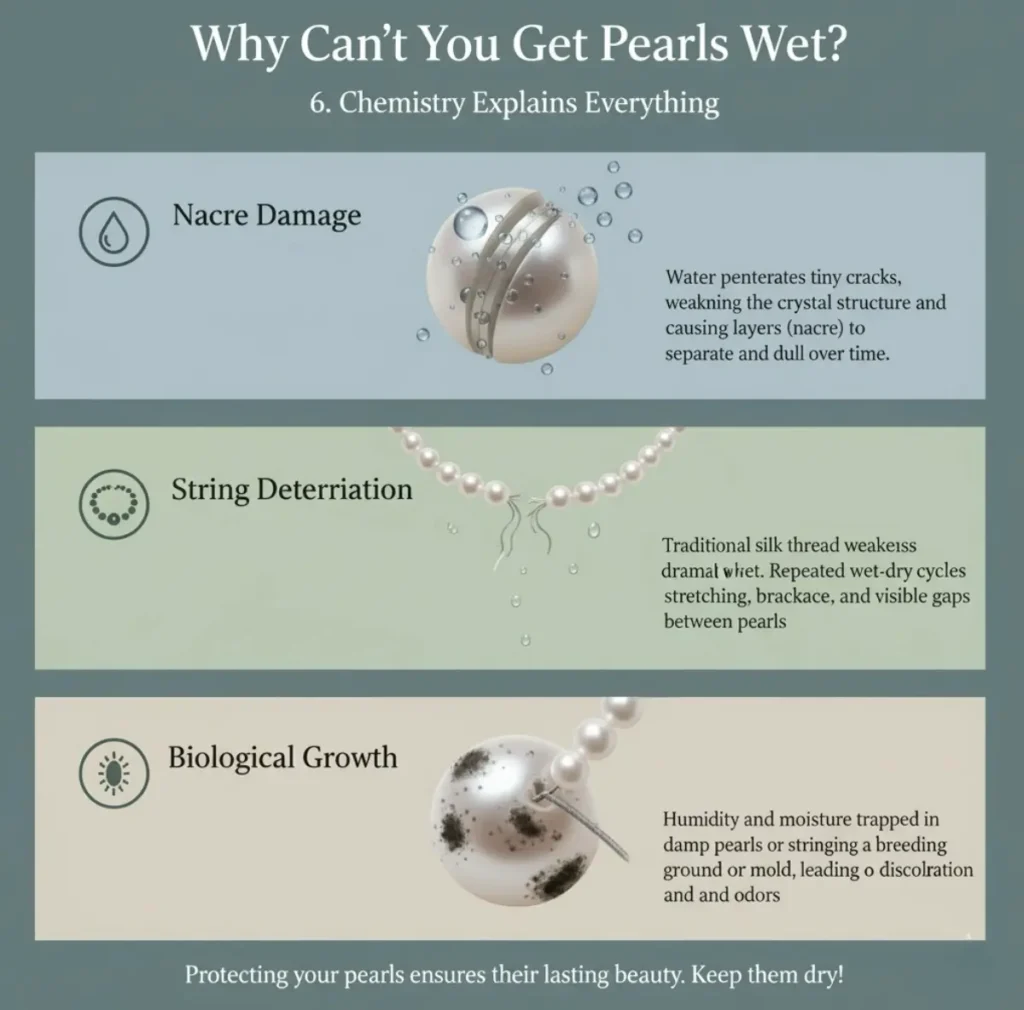
Water can be sneaky and seep into tiny little cracks in the pearl’s surface. Over time, this can weaken the pearl’s structure and cause its layers to separate. This is even more of a risk if the pearl has natural flaws or if you’ve had it for a while.
The silk thread binding most pearl strands becomes another vulnerability. When wet silk dries, it shrinks slightly. Repeated wet-dry cycles cause the thread to stretch, weaken, and eventually snap. You’ll notice spacing changes between pearls—a telltale sign of water damage to the stringing.
Bacteria and mold can develop in constantly moist pearls or those stored while damp. This biological growth creates odors and can discolor both the pearls and their stringing material.
While some newer pearl necklaces use synthetic threads that hold up better to water than the silk ones used in the past, it’s still best to keep your pearls dry. No matter what they’re strung on, the pearl itself (the nacre) can still be damaged by water, so be mindful when wearing pearls.
7. How should pearls be stored?
Storing your pearls the right way will protect your investment and keep them looking beautiful for years to come, which is an important part of the overall practice of wearing pearls.
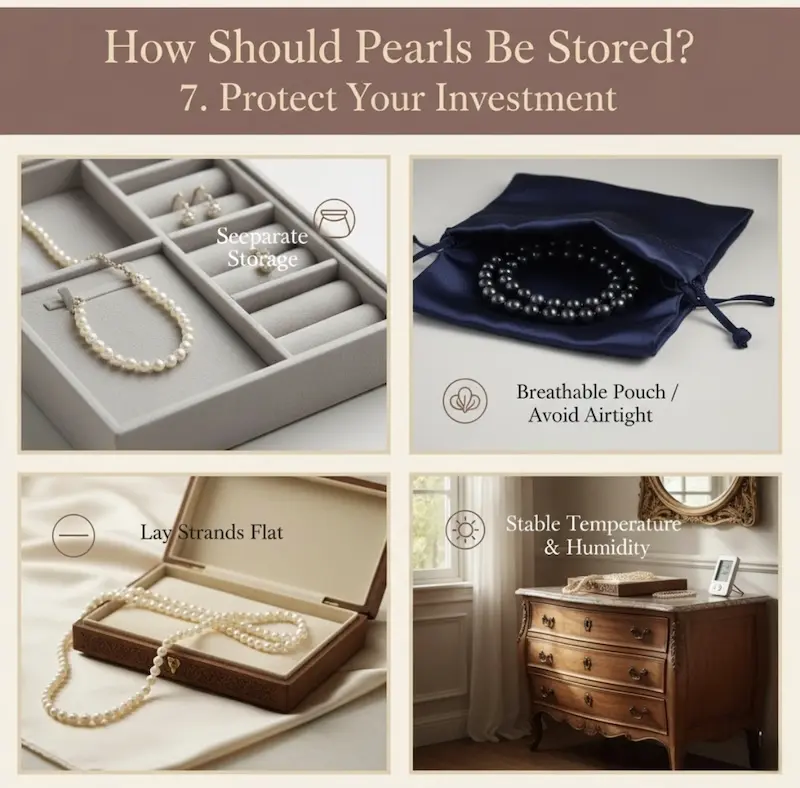
- Separate storage is non-negotiable. You absolutely have to store them separately. Pearls should never tumble in a jewelry box with other pieces. Use a soft pouch, lined compartment, or wrapped cloth. Some collectors dedicate an entire small box just for pearls.
- Avoid airtight containers. This surprises many customers. Pearls need some air circulation because they contain water (typically 2-4% of their composition). Completely airtight storage can cause them to dry out, crack, or lose luster. A breathable fabric pouch offers ideal protection.
- Temperature and humidity matter. Extreme dryness or heat can damage pearls as surely as excessive moisture. Room temperature with moderate humidity suits them perfectly. Avoid storing pearls in direct sunlight, near heating vents, or in attics and basements with extreme temperature swings.
- Lay strands flat rather than hanging them. When you hang pearl necklaces, the thread stretches over time, especially with heavier pearls. The weight builds up at the bottom, which puts stress on both the string and the pearls.
If you’re a retailer, show your customers how to store their pearls properly by using display pieces. Emphasize how easy it is when you have the right setup.
8. How often should pearl jewelry be restrung?
Wearing pearls regularly means eventually facing restringing. It’s not optional maintenance—it’s essential.
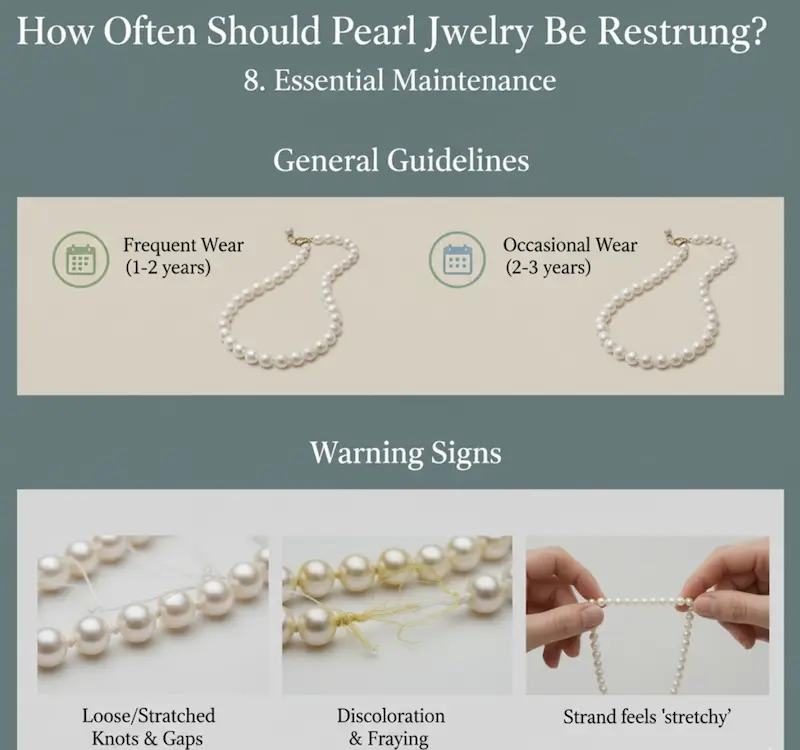
Here’s a general guideline for restringing your pearls: If you wear them often (several times a week), get them restrung every 1-2 years. Restringing them annually if you wear them that much gives you extra peace of mind. If you only wear them occasionally (a few times a month), every 2-3 years is usually fine.
Warning signs that restringing can’t wait:
- Visible spacing between pearls and knots
- Thread showing discoloration or fraying
- Knots looking loose or stretched
- The strand feeling longer than you remember
- Any “give” or elasticity when you tug gently on the strand
When you get your pearls professionally restrung, it’s more than just replacing the thread. A good jeweler will clean each pearl one by one, check them for any damage, make sure there are proper knots between each pearl to stop them from rubbing against each other, and also make sure the clasp is still secure.
A lot of people hesitate when they hear the price of restringing. Try thinking about it this way: restringing only costs a small percentage of what your pearls are actually worth, and it can add decades to their lifespan. It’s really protecting your investment, not just an unnecessary expense.
9. What’s the best way to clean pearls?
No one should be afraid of cleaning. To keep your pearls safe while you are wearing pearls, try to do this simple thing:
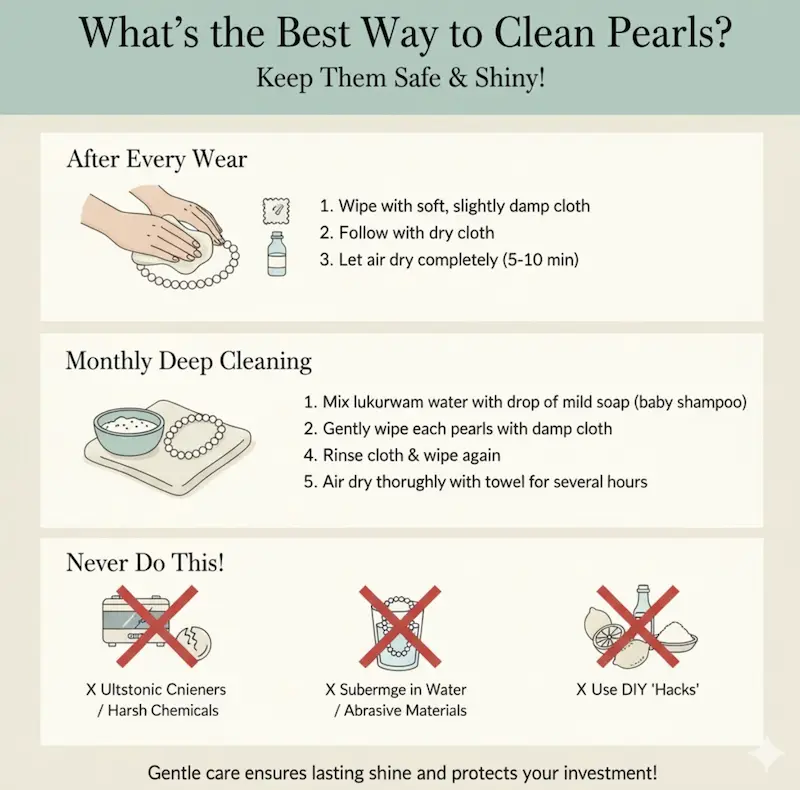
After every wear:
- Wipe with a soft, slightly damp cloth
- Follow with a dry cloth
- Let air dry completely before storing (5-10 minutes)
Monthly deep cleaning:
- Mix lukewarm water with a tiny drop of mild soap (baby shampoo works perfectly)
- Dampen a soft cloth with this solution
- Gently wipe each pearl
- Rinse the cloth in clean water and wipe again to remove soap residue
- Dry thoroughly with a soft cloth
- Let air dry on a towel for several hours before storing
Never:
- Use ultrasonic cleaners (they can crack pearls)
- Apply commercial jewelry cleaners (too harsh)
- Submerge pearl strands in water
- Use brushes or abrasive materials
- Apply baking soda, vinegar, or other DIY “hacks” found online
The gentler you are when cleaning your pearls, the longer they’ll keep that amazing shine. This easy routine only takes a few minutes, but it will keep them looking beautiful for years to come.
10. Can I wear pearls with casual outfits?
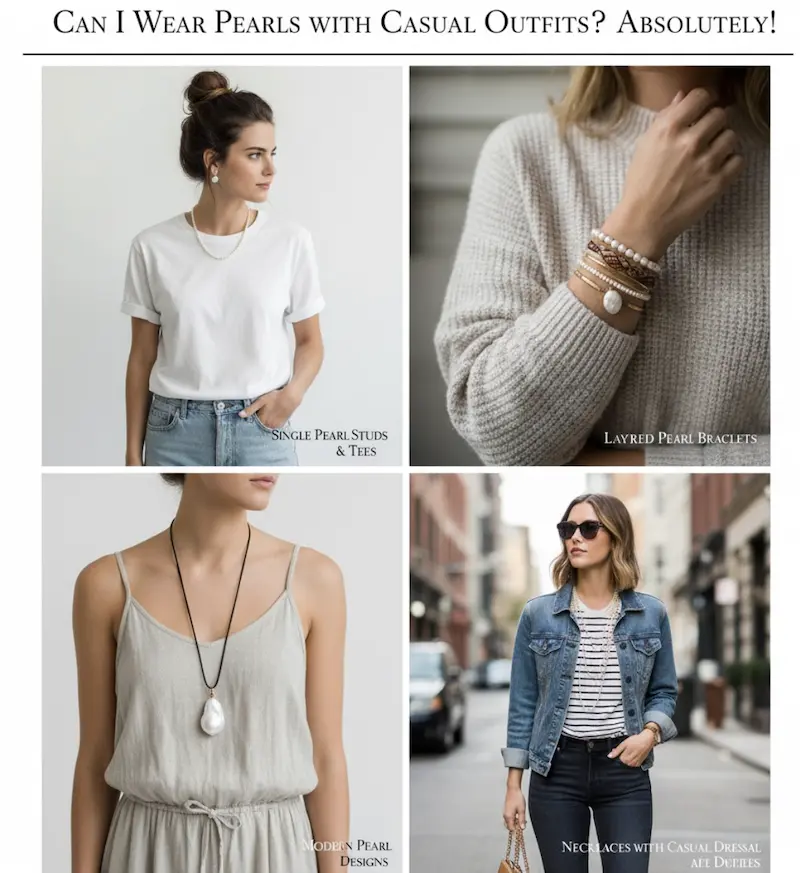
Totally! Pearls definitely aren’t just for fancy occasions anymore. Wearing pearls with jeans, t-shirts, and casual dresses gives you that cool, mixed-style look that’s really popular right now.
It really comes down to picking the right pearl jewelry:
Single pearl studs work with literally everything. They give you a touch of class without being over-the-top formal.
Shorter pearl necklaces (16-18 inches) look great with crew neck sweaters, button-down shirts, and everyday dresses. They elevate without overwhelming.
Pearl bracelets might be the most versatile pearl jewelry. You can stack them with other bracelets, or wear them on their own – either way works for a relaxed, casual vibe.
Modern pearl designs that use leather cords, different metals, or really contemporary settings. These are specifically made to be worn in more casual situations.
For retailers, this versatility expands your market dramatically. Show customers how pearls work beyond formal events. Style them with casual pieces in your displays. The more wearability customers see, the more confident they feel making the purchase.
Making the Most of Your Pearl Investment
Once you understand the basics, wearing pearls goes from being a daunting task to something really enjoyable. Your customers aren’t just buying jewelry, they’re investing in pieces that can be cherished for years and passed down through their families if they take good care of them.
| Care Aspect | Frequency | Time Required |
|---|---|---|
| Wiping after wear | Every wear | 30 seconds |
| Deep cleaning | Monthly | 5 minutes |
| Professional inspection | Annually | 15 minutes |
| Restringing | Every 1-2 years | Varies |
As you guide customers through their pearl journey, remember that education builds loyalty. The customer who understands why certaAs you’re helping your customers choose their pearls, keep in mind that educating them builds a strong connection. The customer who knows why certain care steps are important, as detailed in our comprehensive guide, will become a loyal supporter of pearls and your store.
Wearing pearls successfully isn’t complicated. It just takes a little regular care, a gentle touch, and a real appreciation for these natural treasures. Get to know these easy rules, tell your customers about them, and watch them form a lasting bond with their pearl jewellery (and appreciate how much you know!).

